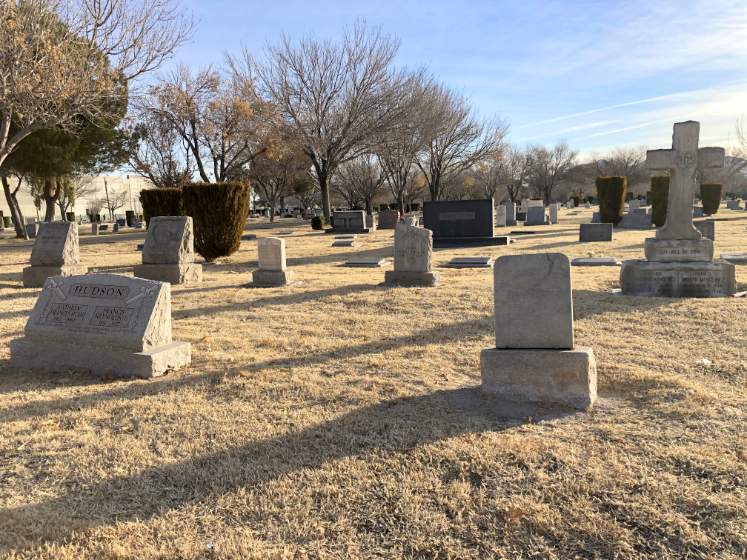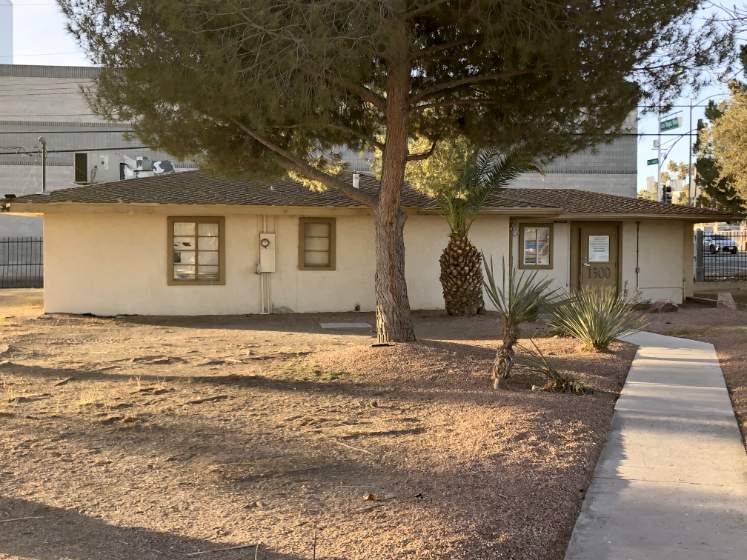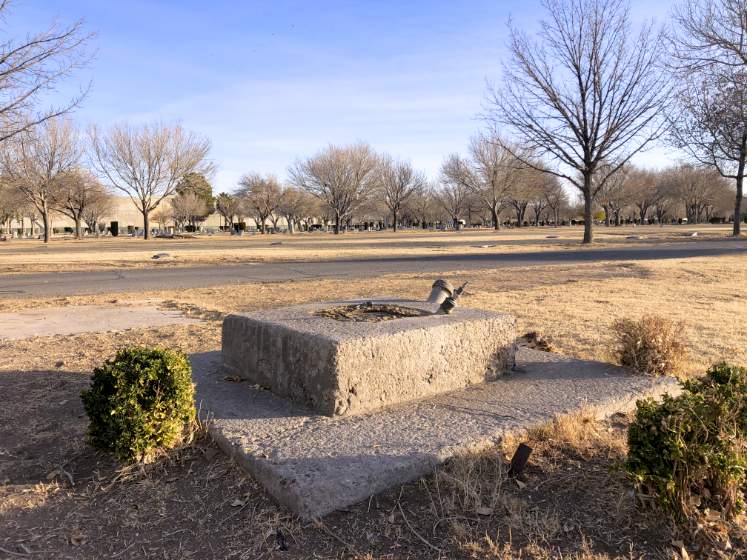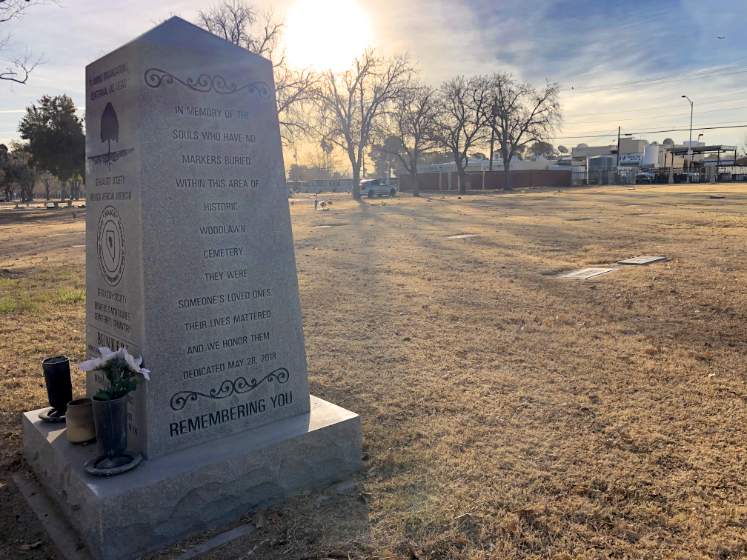
Woodlawn Cemetery


A portion of the cemtery's caretaker building dates back to 1915.

The historic well was constructed in 1916. It is one of the first wells to be drilled in the Las Vegas Valley.


"The cypress section of the cemetery has been used for decades for burial of the Clark County unknown person. The County Coroner's Office works diligently to try and identify everyone. The unidentifiable persons are buried three deep, saving money and space. It is hoped that in the future, with modern technology and DNA advancements these unknown souls can be exhumed and identified. Over 40,000 unknown person are listed in National Data Bases. Let us always remember!" (Woodlawn Cemetery)
"Until 1914, when the railroad donated land for a city cemetery, people buried the dead in small family plots or on public land just north of the railroad-owned Las Vegas Ranch, east of Las Vegas Boulevard.
In pre-railroad times, the Paiute Indians and the few local ranchers set aside graveyards for family use. Other deceased were placed in an informal burial ground just north of Las Vegas Ranch. The markers for these graces eventually disappeared, and the burials were forgotten. In 1914, several prominent local women persuaded the railroad to donate ten acres of the Las Vegas Ranch, just south of the unofficial graveyard, to be dedicated as a city cemetery. The city accepted the gift and chose the name Woodlawn. Since 1914, any early burials discovered outside the cemetery boundaries have been re-interred here.
Woodlawn management chose the gravestones for black citizens until 1939, when black residents asked for the right to choose their own plots. The city allowed a delegation from the black community to choose a section of the cemetery exclusively for black burials, and promised that Woodlawn would provide proper care of the graves.
...prominent local attorney Harley Harmon, gunslinger Diamondfield Jack Davis, and local farmer Bill Tomiyasu whose produce helped feed those who built Hoover Dam. Other notables interred here are "Nick the Greek" Dandolos, a famous gambler who lost $500 million before he died penniless in 1964, and eight Civil War veterans."
(Las Vegas Pioneer Trail Marker 14)
"Opened in 1914 on ten acres of donated land, the cemetery was the unofficial veterans cemetery until 1989 and is the home of Veterans Memorial Circle."
(Woodlawn Cemetery)
Designed by: J.T. McWilliams.
Listed on the National Register of Historic Places in 2006.
Listed on the City of Las Vegas Historic Property Register in 2008.
Located at 1500 North Las Vegas Boulevard, Las Vegas, Nevada.